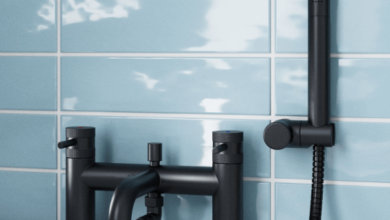Harness the Power of the Sun: Solar Solutions for Strata Apartments

Making the switch to solar energy is a smart decision that yields both economic and environmental benefits. Solar energy reduces operational costs, boosts occupant satisfaction, and provides an income stream for investors. Strata apartments represent a special case when it comes to tapping into this renewable resource – but with the right plan in place, these complexes can also benefit from green power solutions. In this blog post, we’ll explore how strata apartment buildings can leverage solar technology to create cost savings, lower their carbon footprint, and generate new revenue streams.
What is Solar Energy and How Can it Help Strata Owners?
Solar energy is power generated by the sun’s rays. Solar panels convert this light into electricity, which can then be used to run appliances, lights, and other residential or commercial devices. This renewable source of energy has several advantages over traditional sources like gas and oil: it’s clean, efficient, and cost-effective. As strata apartment blocks look to reduce operational costs, solar energy offers a viable solution.
Benefits of Installing Solar Panels on Your Strata Building
As an environmentally conscious individual, you may have already considered installing solar panels in your home. But have you ever considered the benefits of installing solar panels on your strata building? Here are six advantages of installing solar panels on your strata building.
1. Financial savings: One of the primary benefits of installing solar panels on your strata building is the potential for significant financial savings. By generating your electricity, you can significantly reduce your building’s reliance on traditional energy sources and potentially save on monthly utility bills. Additionally, many governments offer tax incentives and rebates for installing solar panels, which can help offset the initial installation costs.
2. Increased property Value: Installing solar panels can help increase the value of your strata building. Many homebuyers are increasingly interested in purchasing energy-efficient homes, and having solar panels installed can help set your building apart from others on the market. Plus, potential buyers may be more willing to pay a premium for an eco-friendly building with lower energy bills.
3. Reduced carbon footprint: Strata buildings can have a significant impact on the environment due to their size and energy usage. By installing solar panels, your building can reduce its carbon footprint and promote sustainability. Solar energy is a clean and renewable energy source that produces no emissions, and the more buildings that switch to solar, the more we can reduce our overall carbon emissions.
4. Increase long-term energy security: Installing solar panels can provide long-term energy security for your strata building. Unlike traditional energy sources, solar energy is a renewable resource that won’t run out. This can provide your building with greater energy independence and reduce your reliance on traditional energy sources that may be subject to price volatility or political instability.
5. Community building: Finally, installing solar panels can also help foster a sense of community within your strata building. By collectively coming together to promote sustainability and reduce your carbon footprint, you can build stronger relationships with your neighbors and promote a shared commitment to environmental stewardship.
6. Potential for new revenue streams: Last but not least, installing solar panels can also provide you with the potential to generate additional income. Depending on your local laws and regulations, you may be able to sell excess energy produced by your building’s solar panels back to the grid. This could provide you with an additional source of income while simultaneously promoting sustainability in your community.
How Much Does Solar Installation Cost and When Should You Consider It?
The cost of solar installation can vary significantly depending on several factors, including:
1. Roof type: The type of roof that you have will affect the cost of solar installation, as some roofs can be more difficult to work with than others.
2. Size of your building: The size of your building also plays a role in determining the cost of solar installation, as larger buildings require more equipment and materials.
3. Location: Where your building is located affects the number of hours that you can expect to
generate solar energy, which plays a role in determining the cost of installation.
4. Electrical infrastructure: The existing electrical infrastructure of your building will also affect the cost of installing solar panels, as some buildings may require additional wiring or other equipment to accommodate solar energy.
5. Rebates and incentives: Installing solar panels may qualify you for rebates and tax credits from both federal and state governments that can help reduce the upfront costs associated with installing solar panels.
6. Quality of equipment: Finally, the quality of the equipment you choose will also play a role in determining the cost of installation, as higher-quality components tend to be more expensive than their lower-end counterparts.
Evaluating the Potential Return on Investment of Installing Solar Panels
To determine if installing solar panels is a good investment for your strata building, you should consider the cost of installation, expected energy savings over time, and potential additional revenue from selling excess energy back to the grid. If you decide that it makes sense to install solar for strata buildings, then there are many different financing options available to make the process easier.
Tips and Tricks for Making the Most Out of Your Solar Installation
Here are some tips and tricks to keep in mind when installing and using your solar system:
1. Regular maintenance: It’s important to have regular maintenance done on your solar panels to ensure that they are working efficiently and the equipment is functioning properly.
2. Optimize energy usage: Make sure you’re optimizing your building’s energy usage by turning off lights, appliances, and electronics when not in use. This will help reduce your overall electricity consumption and save money over time.
3. Invest in a battery storage system: A battery storage system can be a great way to store excess energy produced by your strata building during times of peak production for future use
instead of selling back to the grid.
4. Monitor system performance: Finally, make sure to monitor the performance of your solar system to ensure that it’s working as expected and you’re getting the most out of your investment.
Harnessing the power of the sun can be an excellent way for strata buildings to reduce electricity costs, save money over time, and promote a shared commitment to environmental stewardship. Installing solar panels can provide you with many potential benefits, but it’s important to evaluate all associated costs and consider the long-term implications before making any decisions. By following some basic tips and tricks, you can make sure you get the most out of your new solar system.
Conclusion
Installing solar panels in a strata building can be a great way to reduce electricity costs, save money over time, and promote environmental stewardship. However, it’s important to carefully consider all associated costs and potential returns on investment before making any decisions. From the roof type and size of your building to existing electrical infrastructure and quality of equipment, many factors will affect the cost of installation. By following some basic tips and tricks, you can make sure you get the most out of your new solar system. Harnessing the power of the sun provides countless benefits for both your strata building and the environment at large – so why not give it a try?





